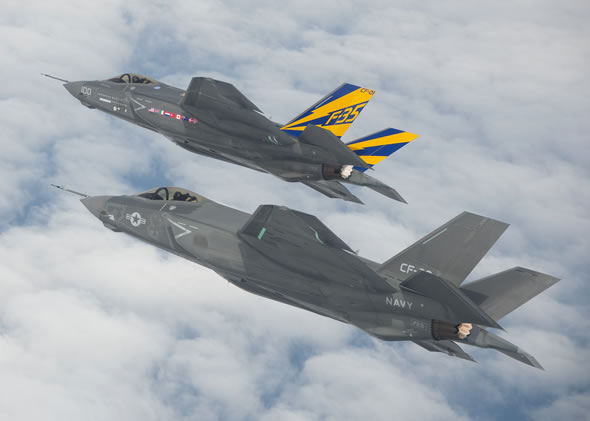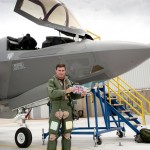

As Defense Update wrote before, (1, 2) the British Ministry of Defense (MOD) is evaluating two F-35 variants for its new aircraft carriers – the F-35B Short Take Off Vertical Landing (STOVL) and F-35C Carrier Variant (CV). The UK originally opted for the F-35B but under the 2010 Strategic Defence and Security Review (SDSR) MOD planned to overcome development delays and rising costs by adopting the F-35C developed for the US Navy, which was considered a more dependable long-term solution.
But it seems the downside of the STOVL means more than costs and timetable. A classified operational analysis prepared for the MOD WAS leaked by the Daily Telegraph casts shadow on the capability of the F-35B to meet the requirements set by the military with at the number of planes currently planned for procurement. The document stated that in order to fulfill the entire mission requirements set by MOD, which could be met by 97 F-35Cs, MOD will have to buy 136 F-35B STOVL ‘jump jets’, at an extra cost of £2.4 billion.
Nevertheless, British Prime Minister David Cameron is expected to support shifting back to the STOVL variant.
Among the missions these carrier-based fighters will have to perform are support missions in land locked areas such as Afghanistan, or long ranges missions to the Falklands, as well as over-land sorties protecting British interests in the Arabian Peninsula and Africa. In most of these contingencies, transit distance will significantly limit the mission endurance of a STOVL variant, whose fuel capacity has been limited to clear space for the lift fan. The CV variant carries extra fuel tanks in this empty space. Furthermore, the STOVL variant needs more fuel to support the fuel-guzzling hovering for the landing. According to the operational analysis study prepared for the MOD by the Defence Science and Technical Laboratory (DSTL), the F-35B could spend roughly 20 minutes over a target 300 nautical miles away from the aircraft carrier, compared with 80 minutes for the conventional F-35C.

The construction of the Queen Elizabeth II aircraft carriers must match MOD choice of aircraft – protecting the deck surface from the high temperatures created by the jet blast on vertical landing, or adding catapults and arresting cables and extending the deck to support the catapult launch, which will also be able to support the French Rafale fighters on joint missions at sea. The F-35C choice has hidden extra costs as well. Catapults and arresting gear were not included in the original plan of the two carriers. MOD is estimating the conversion of the carriers from theoriginal design to one that supports the F-35C could cost up to £2 billion. MOD claim it cannot support these growing costs within the current budget and austerity plans as dictated by the SDSR.
















